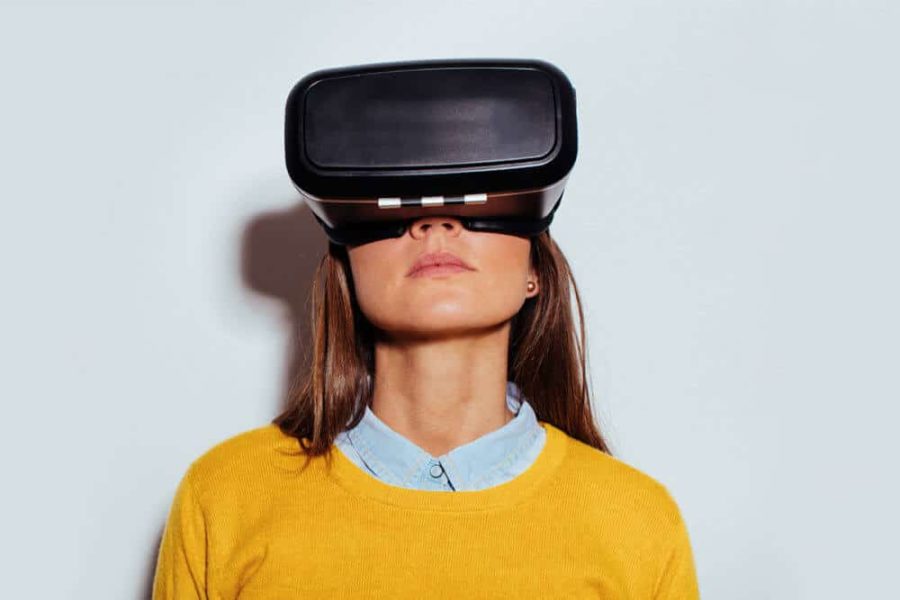Some new technologies can be tuned to our personal characteristics, like the voice recognition on smartphones trained to recognize how we speak. But that isn’t possible with today’s virtual reality headsets. They can’t account for differences in vision, which can make watching VR less enjoyable or even cause headaches or nausea.
Now researchers at Stanford’s Computational Imaging Lab, working with a Dartmouth College scientist, are developing VR headsets that can adapt how they display images to account for factors like eyesight and age that affect how we actually see.
“Every person needs a different optical mode to get the best possible experience in VR,” said Gordon Wetzstein, assistant professor of electrical engineering and senior author of research published in Proceedings of the National Academy of Sciences.
Though the work is still in its prototype stage, the research shows how VR headsets could one day offer the sort of personalization that users have come to expect from other technologies.
“We hope our research findings will guide these developments in the industry,” Wetzstein said.
Problems focusing
The problem that the researchers set out to solve is that the display screens on VR headsets don’t let our eyes focus naturally. In real life, once our eyes focus on a point everything else blurs into the background. VR makes focusing more difficult because the display is fixed at a certain point relative to our eyes. This eyestrain can cause discomfort or headaches.
“Over a 30- to 40-minute period, your eyes may start hurting, you might have a headache,” said Nitish Padmanaban, a PhD student in electrical engineering at Stanford and member of the research team. “You might not know exactly why something is wrong but you’ll feel it. We think that’s going to be a negative thing for people as they start to have longer and better VR content.”
Importantly, the effects of visual conflicts in VR may affect younger and older people differently. For example, people over the age of 45 commonly experience presbyopia – a difficulty focusing on objects close up. Younger people don’t generally have presbyopia but they may have vision issues that require them to wear glasses. In either case, current VR headsets don’t take these vision difficulties into account.
“One insight in our paper is to consider age as a factor, rather than focusing only on young users, and to show that the best solution for older users is likely different than for younger users,” said Emily Cooper, a research assistant professor in Dartmouth’s Department of Psychological and Brain Sciences.
Adaptive focus
The researchers are testing hardware and software fixes designed to change the focal plane of a VR display. They call this technology adaptive focus display.
The group tested two different hardware options. One relies on focus-tunable liquid lenses. Twisting a dial squeezes the liquid lenses inside the headset to change the screen display even though the lens itself remains in place. The other option involves mechanically moving the display screen back or forth, like adjusting a pair of binoculars. The system also incorporates eye-tracking technology to determine where on the screen the user is looking.
In conjunction with the eye-tracking technology, software ascertains where the person is trying to look and controls the hardware to deliver the most comfortable visual display. The software can account for whether a person is nearsighted or farsighted but cannot yet correct for another vision issue called astigmatism. With these displays, VR users would not need glasses or contacts to have a good visual experience.
“It’s important because people who are nearsighted, farsighted or presbyopic – these three groups alone – they account for more than 50 percent of the U.S. population,” said Robert Konrad, one of the researchers and a PhD candidate in electrical engineering at Stanford. “The point is that we can essentially try to tune this in to every individual person to give each person the best experience.”
The researchers tested prototypes of these personalized VR displays at last year’s SIGGRAPH conference. Tal Stramer, a Stanford graduate student in computer science, was involved in this phase. The team tested their adaptive focus display on 173 participants aged 21 to 64 and found that the technology provided improved viewing experiences across a wide range of vision characteristics.
If our reporting has informed or inspired you, please consider making a donation. Every contribution, no matter the size, empowers us to continue delivering accurate, engaging, and trustworthy science and medical news. Independent journalism requires time, effort, and resources—your support ensures we can keep uncovering the stories that matter most to you.
Join us in making knowledge accessible and impactful. Thank you for standing with us!

